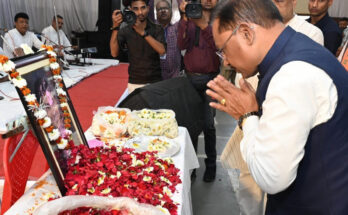NewsDelhi. 11 May 2020, India is observing the National Technology Day on Monday. And Prime Minister Narendra Modi saluted all those that are leveraging expertise to deliver a constructive distinction within the lives of others.
“On National Technology Day, our nation salutes all those who are leveraging technology to bring a positive difference in the lives of others. We remember the exceptional achievement of our scientists on this day in 1998. It was a landmark moment in India’s history,” PM Modi stated on Twitter referring to India’s nuclear take a look at in Rajasthan’s Pokhran.
On National Technology Day, our nation salutes all those who are leveraging technology to bring a positive difference in the lives of others. We remember the exceptional achievement of our scientists on this day in 1998. It was a landmark moment in India’s history.
“The tests in Pokhran in 1998 also showed the difference a strong political leadership can make,” he stated in one other tweet.
The tests in Pokhran in 1998 also showed the difference a strong political leadership can make.
Here is what I had said about Pokhran, India’s scientists and Atal Ji’s remarkable leadership during one of the #MannKiBaat programmes.
The day has a historic perspective because it was on May 11, 1998, that India achieved a significant technological breakthrough by efficiently finishing up nuclear assessments at Pokhran when Atal Bihari Vajpayee was the Prime Minister.
The underground assessments marked the nation’s arrival on the world’s nuclear stage and set the scene for some spectacular developments in its strategic programme.
The first three detonations passed off concurrently at 3.45pm on May 11. These included a 45 kT thermonuclear gadget, a 15kt fission gadget and a 0.2 kt sub-kiloton (which is lower than a kiloton) gadget. The two nuclear units detonated concurrently on May 13 have been additionally within the sub-kiloton vary, 0.5 kT and 0.Three kT.
The take a look at occurred months after then international secretary Okay Raghunath informed his US counterpart that India didn’t have any intention of testing a nuclear gadget.
The take a look at opened floodgates of hassle for India: Sanctions, financial and navy, and interactional isolation.
What adopted have been discussions between Strobe Talbot, then US secretary of state, after which international minister Jaswant Singh – they have been held in seven nations, 10 cities, and included 14 rounds of talks.
For Americans and the west, India was gatecrashing the nuclear membership. With Pakistan searching for nuclear parity, the Americans feared South Asia would develop into a nuclear flashpoint. Quite a lot of the Talbot-Singh dialog lined this floor.
The rapid problem was to mitigate worldwide opposition and finally bridge the belief hole with the US.
But through the years, India efficiently managed all the pieces and its nuclear programme matured considerably.






